Hey everyone, it’s Mason! Today, I’m diving into the story of one of the most unbelievable, most devastating fires you’ve probably never heard about—the Peshtigo Fire. Now, you might be thinking, “How is a fire more destructive than any tornado or earthquake I’ve ever heard of?” Well, let me tell ya, this one’s a whopper, and it’ll leave you scratching your head about how something this massive flew under the radar for so long.
What Sparked the Peshtigo Fire?
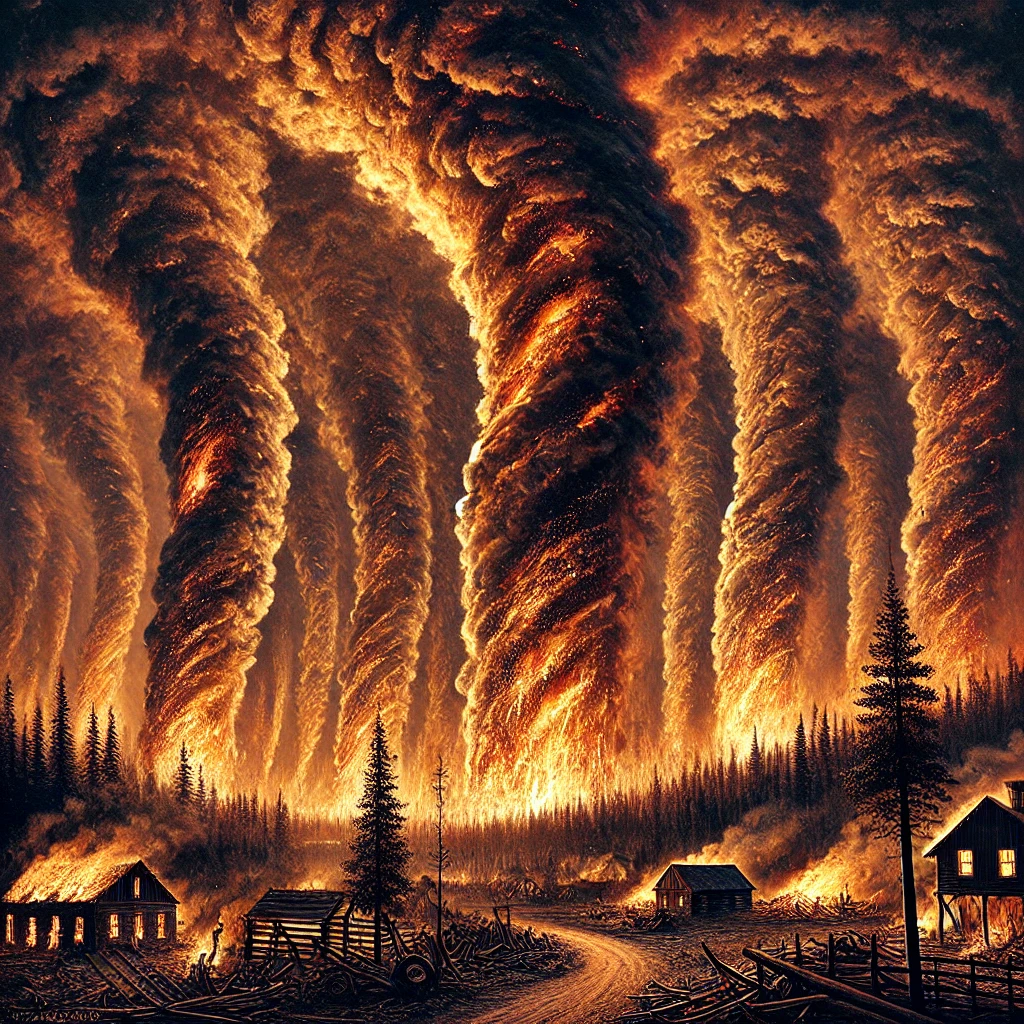
So, on October 8, 1871, way back before Wi-Fi (or even electricity), a fire broke out in Peshtigo, Wisconsin. No one’s 100% sure what started it, but some think it was from railroad sparks or maybe even a lightning strike. Either way, it wasn’t long before the fire spread—like, really spread. We’re talking about a fire so intense it created its own weather system! Yeah, it had literal fire tornadoes. Imagine trying to outrun that!
But the conditions were perfect (well, for the fire, not for the people). There’d been a long drought, and everything was bone dry. When high winds hit, the fire basically had all the fuel it needed to turn into a mega-monster.
The Deadliest Fire in American History
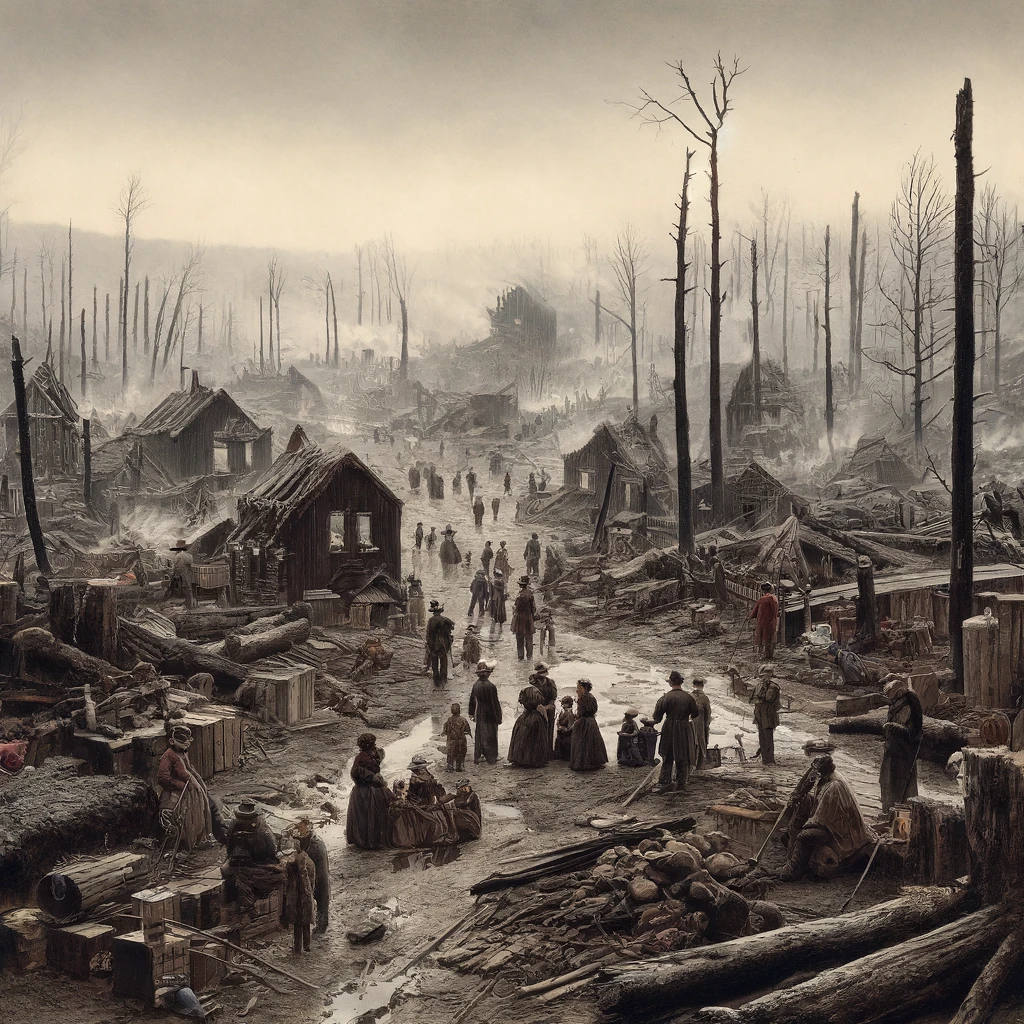
When you think of devastating fires, maybe the Great Chicago Fire pops into your head, right? Well, guess what? The Peshtigo Fire happened on the same day as the Chicago fire, but it was so much worse. It wiped out about 1.2 million acres and killed over 1,200 people—making it the deadliest wildfire in U.S. history. And here’s the wild part: hardly anyone talks about it!
Folks didn’t have fancy fire alarms or quick-to-respond fire departments back then. Most people were out there living off the land, cutting down trees, and boom—suddenly the fire’s in their backyard. Some people tried escaping by boat or jumping into rivers, but the fire was so hot it even boiled the water! Yeah, sounds like a scene out of a movie, but it really happened.
What Made This Fire So Unstoppable?
- Drought: The region had been super dry for weeks before the fire.
- Strong Winds: These winds fanned the flames, pushing the fire faster than anyone could run.
- Dry Timber: Logging was a huge deal in Wisconsin, and all that leftover wood just fed the flames.
- Fire Tornadoes: Seriously, this fire created whirlwinds of flames. It’s like nature decided to throw in a curveball just for fun.
How Did People Survive?
Okay, so you’re probably wondering, “How on earth did anyone survive something like this?” Some people did manage to escape, though not many. A lot of survivors jumped into rivers or wells to avoid the flames, but even then, the heat was so intense it was still life-threatening. Some prayed for rain, and others huddled together, hoping for the fire to pass quickly.
But for many, survival wasn’t just about escaping the flames. After the fire, people had to rebuild from literally nothing. Their homes, their food—gone. Imagine losing everything and having to start from scratch without the convenience of cell phones, stores, or help from nearby cities.
The Aftermath: Rebuilding Lives and Communities
The Peshtigo Fire didn’t just destroy forests and towns—it scarred lives forever. Thousands of people were injured, suffering from burns, smoke inhalation, and severe trauma. With no homes to return to, folks were left wandering, trying to find food and shelter.
In the days after the fire, relief efforts started pouring in, with groups like the Red Cross stepping in to provide help. People from across the country sent money, supplies, and whatever they could spare. But, honestly, the road to recovery was long and tough.
Despite the destruction, the community came together, proving that when everything burns to the ground—literally—you can still rise from the ashes.
The Environmental Impact
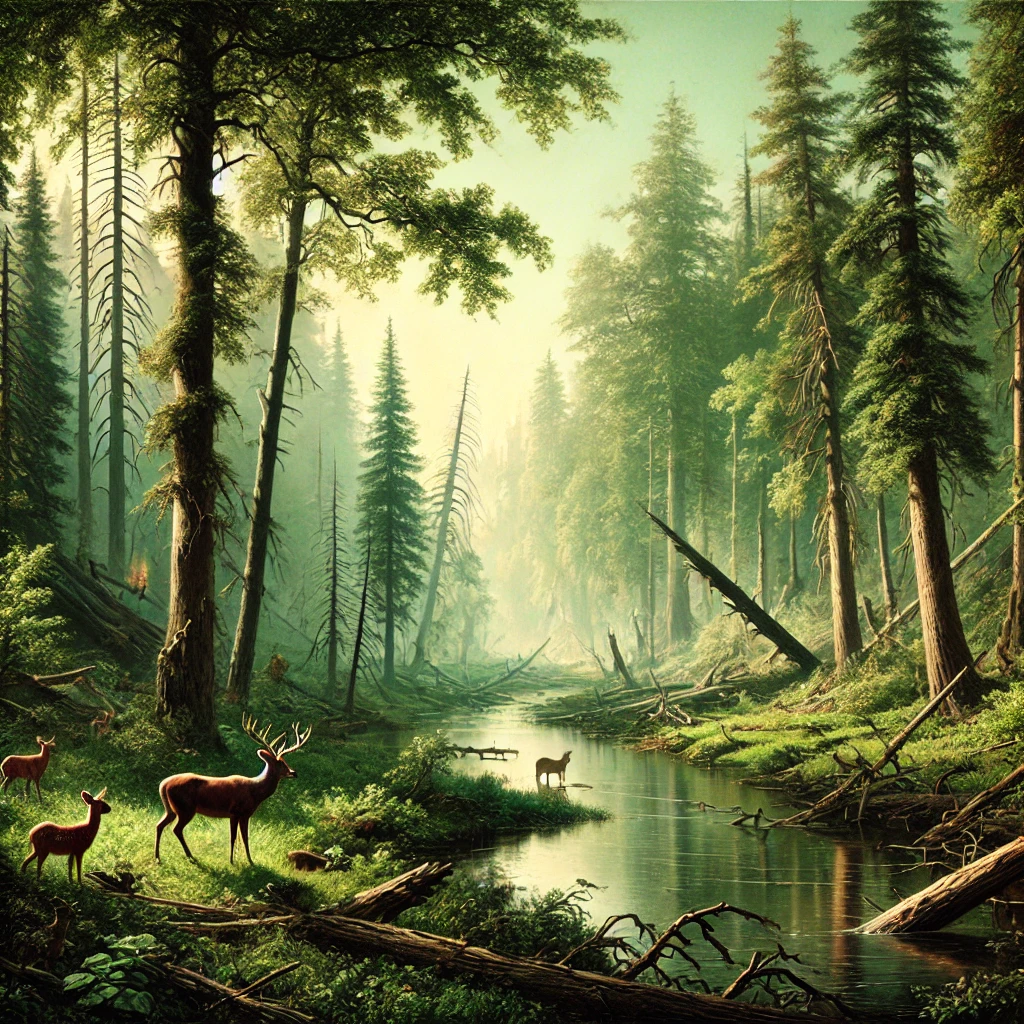
Not only did the fire take lives, but it also wreaked havoc on the environment. The forests that had been lush and green? Gone. Animals lost their homes, and the land was left barren. The fire left behind a layer of ash that damaged water supplies and made the soil almost useless for farming.
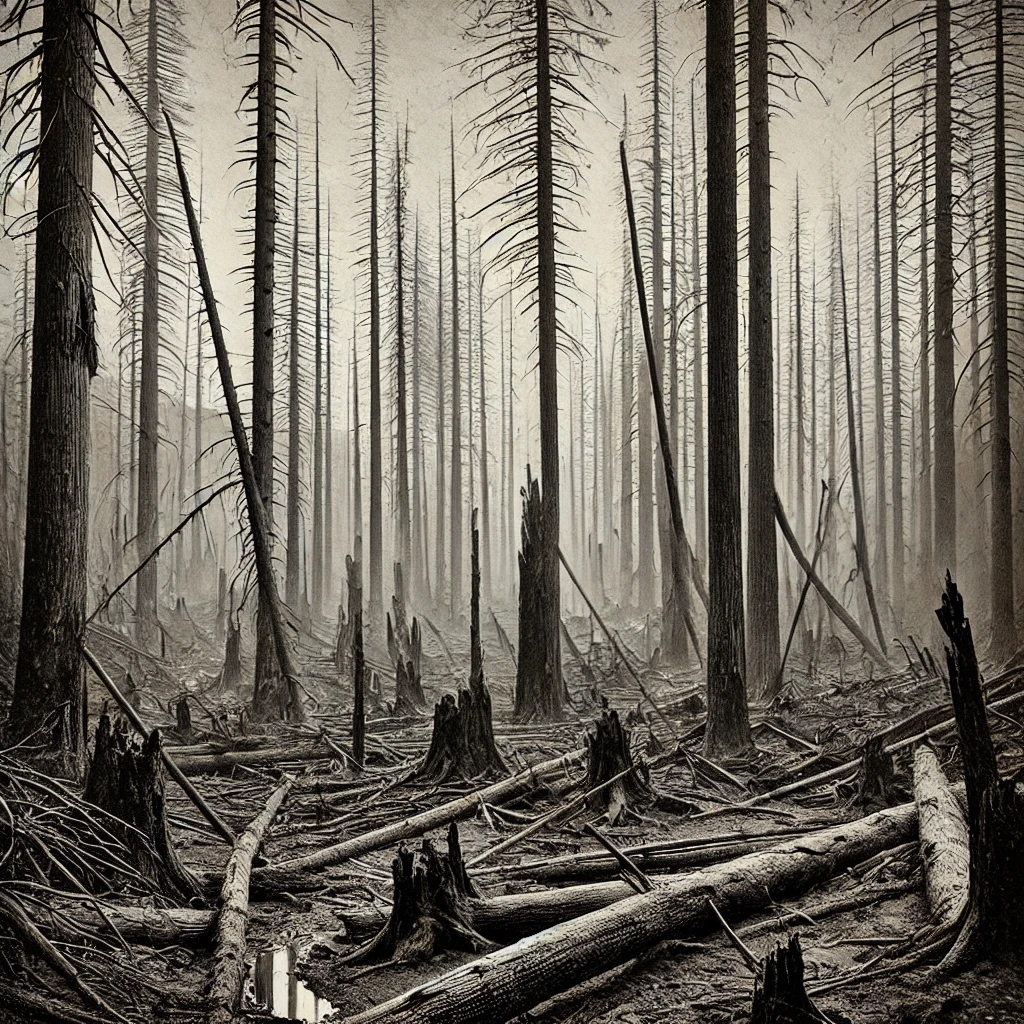
In fact, the fire was so intense that it even affected the weather patterns in the area for weeks afterward. Think about it: one fire, one day, and an entire ecosystem was changed.
Why Don’t We Hear About It?
That’s the big question, isn’t it? The Peshtigo Fire doesn’t get nearly the attention it deserves. The Great Chicago Fire, which happened the same day, took the spotlight, partly because Chicago was a major city. Peshtigo was just a small town, and even though its fire was deadlier, it didn’t get the headlines.
But now, with people like me (Mason, future weather reporter, remember?) sharing the story, more people will know about the Peshtigo Fire and the lessons it holds.
Lessons Learned from the Peshtigo Fire
So, what can we take away from this tragedy? Well, for one, nature is incredibly powerful, and we’ve got to respect it. Fires can happen anywhere, and the conditions that lead to them—like drought and strong winds—are still around today. We’ve got to be smarter about managing our forests and land.
- Always be prepared: Fires can spread fast, so it’s important to have an emergency plan in place.
- Respect nature: Whether it’s logging or camping, we’ve got to be mindful of how we treat the environment.
- Help your neighbors: When disaster strikes, communities come together. It’s important to lend a hand, just like folks did back in 1871.
Remembering the Peshtigo Fire
The Peshtigo Fire isn’t just a story about a terrible fire—it’s about the strength of the human spirit and the way communities come together in tough times. It’s also a reminder of how quickly life can change, and how important it is to be ready for anything.
So, next time you hear someone talk about the Great Chicago Fire, tell them about Peshtigo. Because even though it might not have been in the headlines, the people who lived through it—and those who didn’t—deserve to be remembered.
Let’s reclaim what is rightfully our’s in this digital noise we live in. Join us in this exploration of how deep the rabbit hole actually goes.
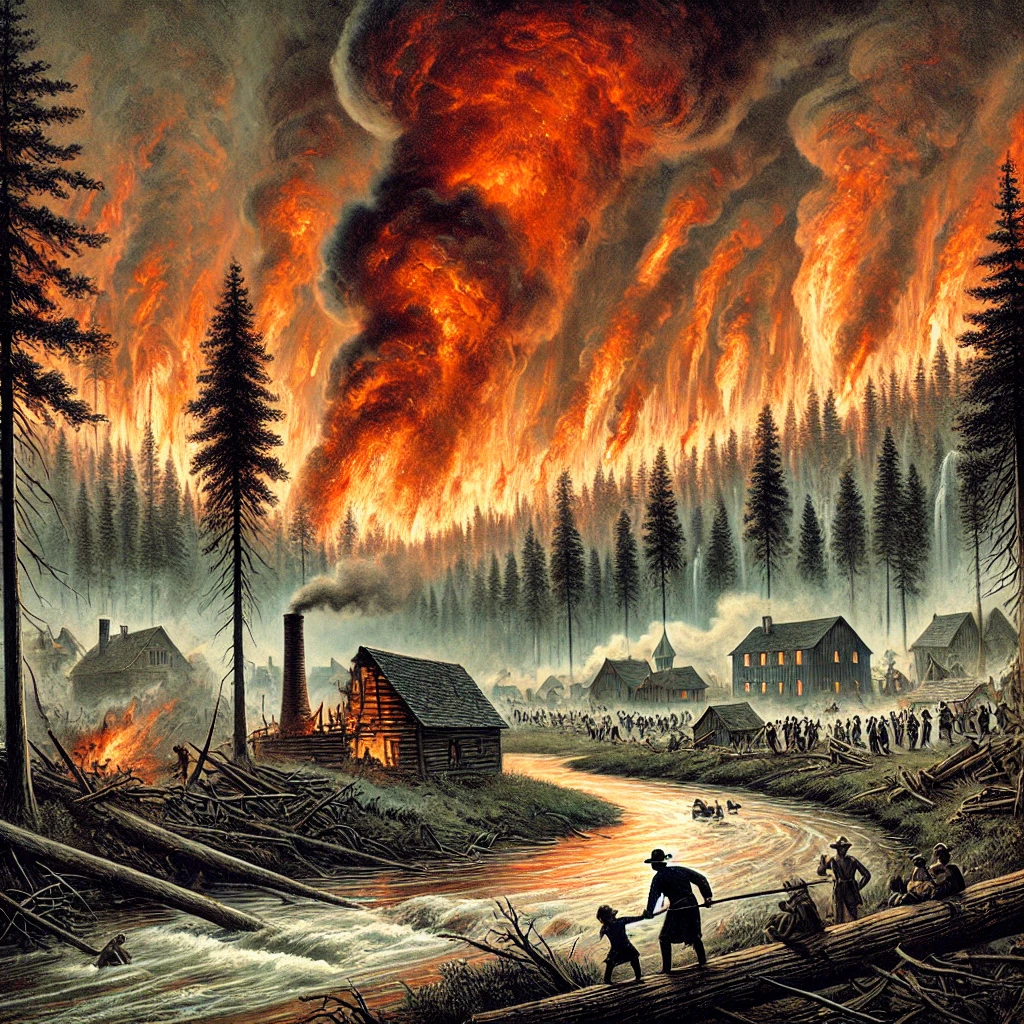
No responses yet